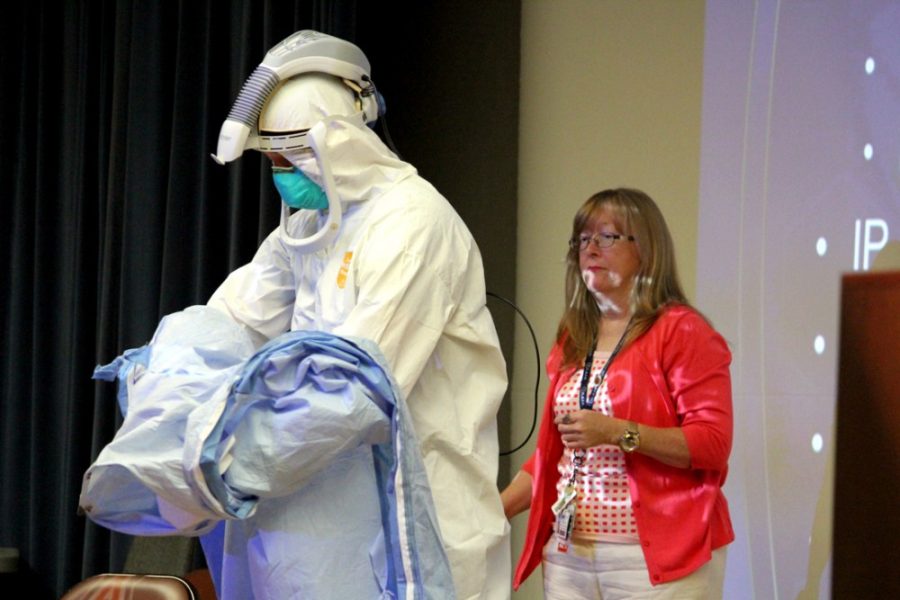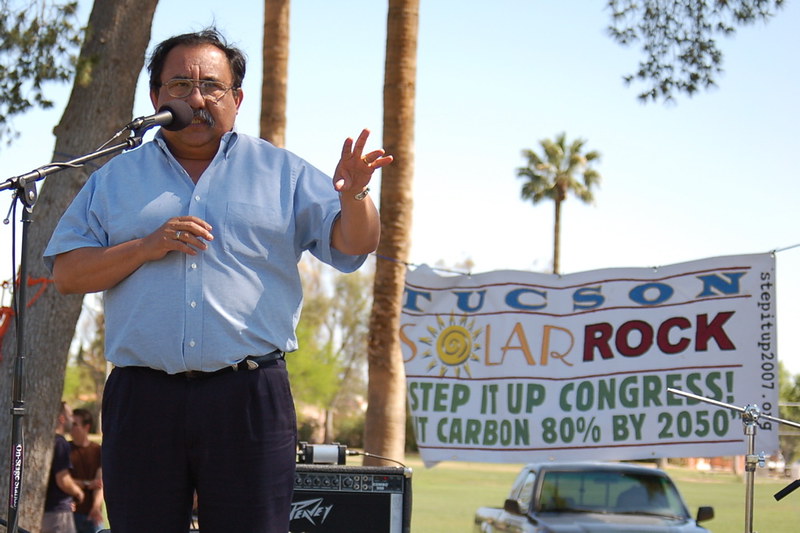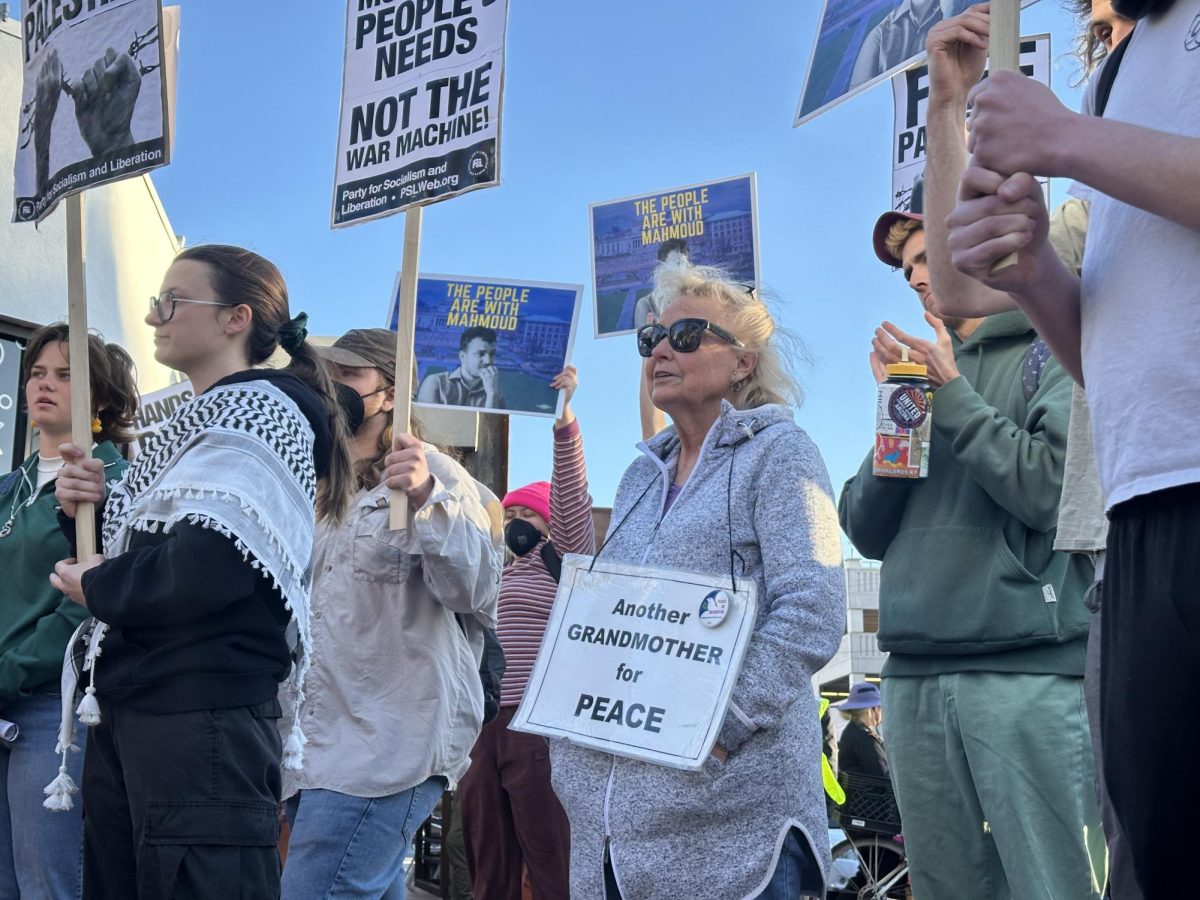UAMC staff members discussed their new protocols for if they should ever need to treat an Ebola patient at a meeting in the medical center on Wednesday.
Dr. Andy Theodorou, chief medical officer of the University of Arizona Medical Center, began the meeting by addressing the auditorium of medical staff about the seriousness of the situation and ensuring them that Ebola preparations are ready.
“This is a big deal,” Theodorou said. “We’re going to be prepared. We’re going to keep you safe. We’re going to keep our patients safe. We’re not going to get caught by surprise.”
Dr. Sean Elliott, medical director of infection prevention for the University of Arizona Health Network, discussed the extensive plan UAMC has developed.
According to Elliott, the plan includes the screening process for Ebola, the methods for preventing staff from contracting Ebola from an infected patient and how to treat a patient who is confirmed to be infected.
Elliott said the screening process includes looking at a patient’s travel history “in the last 21 days” to see if it includes West African countries, as well as checking if the patient exhibits any early symptoms of Ebola.
According to Elliott, a patient would be placed in immediate isolation if they came back positive for both of those checks.Tim Reynolds, a UAHN staff member, demonstrated the nearly impermeable protective suit called Personal Protective Equipment that anyone dealing with a patient in isolation would wear.
The PPE includes an N95 mask to protect staff from fluids splashing into their face, multiple layers of protective gloves, a white plastic suit with a hood, a Stryker toga gown that goes over the front of the suit to prevent the cloth zippers from absorbing fluid and a mask that does not fog.
“We think that we are cutting edge and we are innovating quite significantly,” Elliott said.
According to Elliott, the PPE leaves “no potential of any splash,” which would prevent the infection from spreading.Elliott said the suits were tested with chocolate syrup to verify their integrity.
After confirming a patient had Ebola, they would receive initial medical treatment at UAMC before being transported to one of four accepting hospitals in the U.S., including the National Institute of Health in Bethesda, Md., Emory University Hospital in Atlanta, St. Patrick Hospital in Missoula, Mt. and the Nebraska Medical Center in Omaha, Neb.
The process of removing the suits of those who treat the victims, which is the most dangerous part according to Elliott, will occur in a separate isolated room.
The Ebola staff is being trained on how to remove gear. According to Elliott, each layer will be bleached as it is removed before the suit is left to be sterilized or incinerated.
Don Brazie, corporate emergency preparedness officer for the UAHN, said staff members have been meeting twice a day to discuss how they plan to deal with Ebola.
Brazie said a document with every procedure staff must follow in the case of an outbreak is being prepared. He also said staff will have a walkthrough of every procedure in the next month.
Kevin Langkiet, emergency services director at UAMC, said so many staff members have volunteered to be a part of the team that they have had to be turned away.
Gordon Carr, medical director of the Intensive Care Unit at UAMC, said the UAMC operational model is to have a “hospital within a hospital.”
According to Carr, UAMC has about 35 individuals who have received Ebola training by volunteering on their own time.
“It’s really warmed all of our hearts to see such an enthusiastic and caring response,” Carr said.
Elliott said this outbreak of Ebola may not die down immediately.
According to Elliott, the risk for an outbreak in Southwest Arizona is low because of the location and the way Ebola is transmitted. Elliott said there are not many people living in Southwest Arizona who originate from West Africa. He also said travelers would not be traveling to Tucson, because Tucson is generally a final destination and not a place where there is a lot of thru travel.
Elliott said Ebola can only be contracted by directly touching bodily fluids and not through the air or water.
“We’re being overtly prepared [for Ebola] because we want to reassure the public, but realistically, our threat assessment is zero,” Elliott said.
_______________
Follow Max Rodriguez on Twitter.








